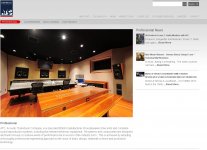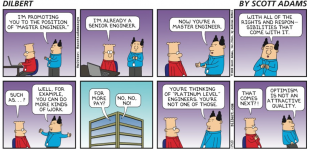Maybe this thread should be moved to the Lounge by now.
Agreed. This thread has become a complete waste. Time to unsubscribe...
it used to be easy to get ATC drivers in the early seventies and in those days ATC's money came from Dave Martin creating the Phillishave mid and Hill Headwater's M3's after garnering a good rep from those driver developments they went after the studio monitor market and dried up the availability of components to the diy crowd.
I emailed them...

The link is only an invitation, I welcome you =)
The link is only an invitation, I welcome you =)
Attachments
Last edited:
isn't that the trend even if the driver ends up else where?studio monitor market and dried up the availability of components to the diy crowd.
Which popular build would you all say, is the current best, DIY Mastering Monitor Build?
Yet here you are post after post? You're attracted to 22 page deep, one star threads then lol!
With regard to your thread's purpose, I was attracted enough to state this:
-it's a wasted thread thinking most designs for monitoring have any real positive or negative effect vs. another non-monitor design. (..and I'm assuming both designs are good.)
The worst part of it is that the recording industry sits in front of a large reflective work surface, with reflections that are FAR closer to the listener than the loudspeakers themselves.
Honestly, if you are in the industry (..being paid for your work: a "professional") - then just spend some of that earnings on a Smyth Realiser and use it.
Alternatively, use a virtual console for your mixing (..particularly if it's multi-channel). No desk, just you in a chair with a split keyboard on the arms and a mouse. Visuals projected on the "front" wall behind the speakers or using some VR headset with some minor added padding on the front to absorb freq.s above 1.5 kHz.
-as for my other posts (except the one mentioning the single-star rating), it was just to offer a different opinion than what a few others provided on incidental posts. It had very little to do with this thread's purpose (as you outlined in your first post).
Again, crappy thread - but's it's not like all threads are going to be good is it? 😱
Last edited:
I don't think it has to be a wasted thread. Maybe a waste of efforts in convincing particular people. Think of it as a very interesting preface. If we move to here, there is no arguing about who did or does what. Everyone here already fits the bill. If it is known that there are mastering engineers in this discussion, are you not willing to contribute for the sake of the greater good or curiosity? Like I said, I invite you to the table, to a link that you can choose to click on or not. I welcome you and everyone else.
To that Question I'll add. What are the perfect crossover points for a mastering monitor? The 700-7000hz range doesn't sound like a good place.
Which popular build would you all say, is the current best, DIY Mastering Monitor Build?
To that Question I'll add. What are the perfect crossover points for a mastering monitor? The 700-7000hz range doesn't sound like a good place.
Last edited:
No need to ask all of us, just contact Dilbert, but do specify the distance and SPL you find most popular to DIY.Which popular build would you all say, is the current best, DIY Mastering Monitor Build?
Attachments
Very funny comic lolNo need to ask all of us, just contact Dilbert, but do specify the distance and SPL you find most popular to DIY.
We have seen evidence of a trend, can we normalize most of these aspects based off some of the pics I've posted?
Based off of previous post Krivium could probably ball park it. I'd guess 6 ft and spl.....100db safe?
Last edited:
That is the most absurd question and statement so far in this thread, considering the amount of platinum albums by dozens of different engineers mastered using monitors with crossovers in that range over your entire lifetime, and long before that.What are the the perfect crossover points for a mastering monitor? The 700-7000hz range doesn't sound a good place.
Last edited:
I can be passionate with my objectivity.You are very passionate. If you had to be objective, you couldn't?
Do you feel there can be a such a thing as a best area to crossover, or not to crossover, before picking drivers?
Do you feel there can be a such a thing as a best area to crossover, or not to crossover, before picking drivers?
A good crossover cannot be decided without knowing that which driver we want to use. There is no such thing as universally good crossover points/slopes IMO.
and then we can make things infinitely more confusing by introducing another layer of complexity by expanding to include passive vs active let alone where to cross!!
- The 700-7000khz is called the critical zone...can you see my suspicion?A good crossover cannot be decided without knowing that which driver we want to use. There is no such thing as universally good crossover points/slopes IMO.
Based off of previous post Krivium could probably ball park it. I'd guess 6 ft and spl.....100db safe?
Ouch! I can't tell from pictures ( parallax and lens can be misleading) and i've seen so different things in mastering studio because as Plasnu already pointed there is a lot of variation from engineer to engineer.*
Let's say 2/3 meters and around 80/85dbspl rms at listening point as an average.
At extreme was 70cm and 5meters and spl from 70 to 90 dbspl rms.
About spl one thing to note about the 70dbspl, the room was extremely quiet with floating room and heavy soundproofing. Don't expect to work at this level in domestic house it is too low at least for my preference. At my present house in countryside i measured 45db background noise at night when all is quiet, during day it can ramp up to 55db ( thanks to the road nearby). I won't work at 90db neither, i would like to keep my ears some more years if possible.
Your question about crossover i don't think this is uninteresting:
I recently posted this link: Design-Criteria
I find the second graph interesting as it display an inverse Fletcher Munson curve in relation to a 'typical direct radiator three way'.
There is interesting point to observe on the curve. It seems obvious to me that certain area are more interesting than other to put a filter in. And it seems to be on par to some design 'school' or trends of few past years.
That said without driver and a design target it seems a bit hollow. But still there is psychoacoustic at work so it can be interesting to only focus on this no?
Art haven't you whitnessed some trends on the outcome within the frequency range where you xover ( you have probably a lot more experience than all of us united so you may have observed some things no?).
* Camplo if you allow me don't focus this much on these pictures. Some are great studio ( i recognise one in Amsterdam) but others are Jouanjean lookalike and probably not this good as they look. To be honest i find them a bit boring same gear, same kind of 'ambiance',... these are nice to look at but that is all to me. They lack personality in my view and more or less conform to 'the art of mastering' thoughts. This is nice and i already said i agree with B.Katz on his approach but honestly i don't think the world need an army of clone of M.Katz.
Last edited:
As long as we can move on from the philosophical design approach argument (pleeaaazzeee). I accept that I may wrong, such is life.
I have believe that there is missing, a current DIY mastering monitoring build.
<3
I have believe that there is missing, a current DIY mastering monitoring build.
<3
Your question about crossover i don't think this is uninteresting:
I recently posted this link: Design-Criteria
I find the second graph interesting as it display an inverse Fletcher Munson curve in relation to a 'typical direct radiator three way'.
There is interesting point to observe on the curve. It seems obvious to me that certain area are more interesting than other to put a filter in. And it seems to be on par to some design 'school' or trends of few past years.
I have believe that there is missing, a current DIY mastering monitoring build.
go ahead lead the charge.
- Home
- Loudspeakers
- Multi-Way
- Mastering Engineer vs Loudspeaker Engineer = Mastering Monitors.

